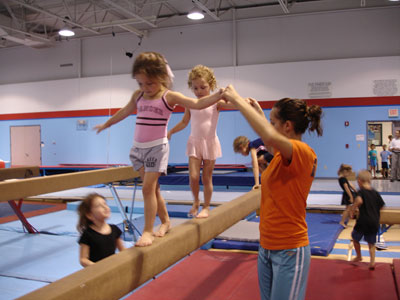The last group teach was a fun way to end them all. Liz, Rob, Cheryl and Mary did a great job getting all of us involved and moving around with their instant activity. Movement is extremely important when teaching physical literacy and understanding how our bodies move. The group chose to do this through music and dance. I thought that this was a great game especially for kindergarten to grade 3. It is important to allow children to explore the different ways in which their bodies through animal movements. These different animal movements focus on locomotion skills which are considered to be fundamental in physical literacy.
Next we moved on to the small group discussions. My group was led by Liz. We talked a lot about healthy living and well-being, we talked about how we could incorporate healthy living into our classrooms when we are not doing PE. This moved us into the main activity. There were more than 12 stations we could move to freely, without instruction. There were small explanations of what was to be done at each station and it was nice that we were allowed to move to the specific stations that we were interested in. Each station was optional. My one concern with this is making sure that your students are actually working at the station that they are at. Keeping them motivated to keep at that station or to try a new one might be tricky when you are the only teacher in the gym with 30 students. The age group is also important to consider. Classroom management would really have to be monitored. Overall, I think that the group teach went well and it was a lovely way to end.


